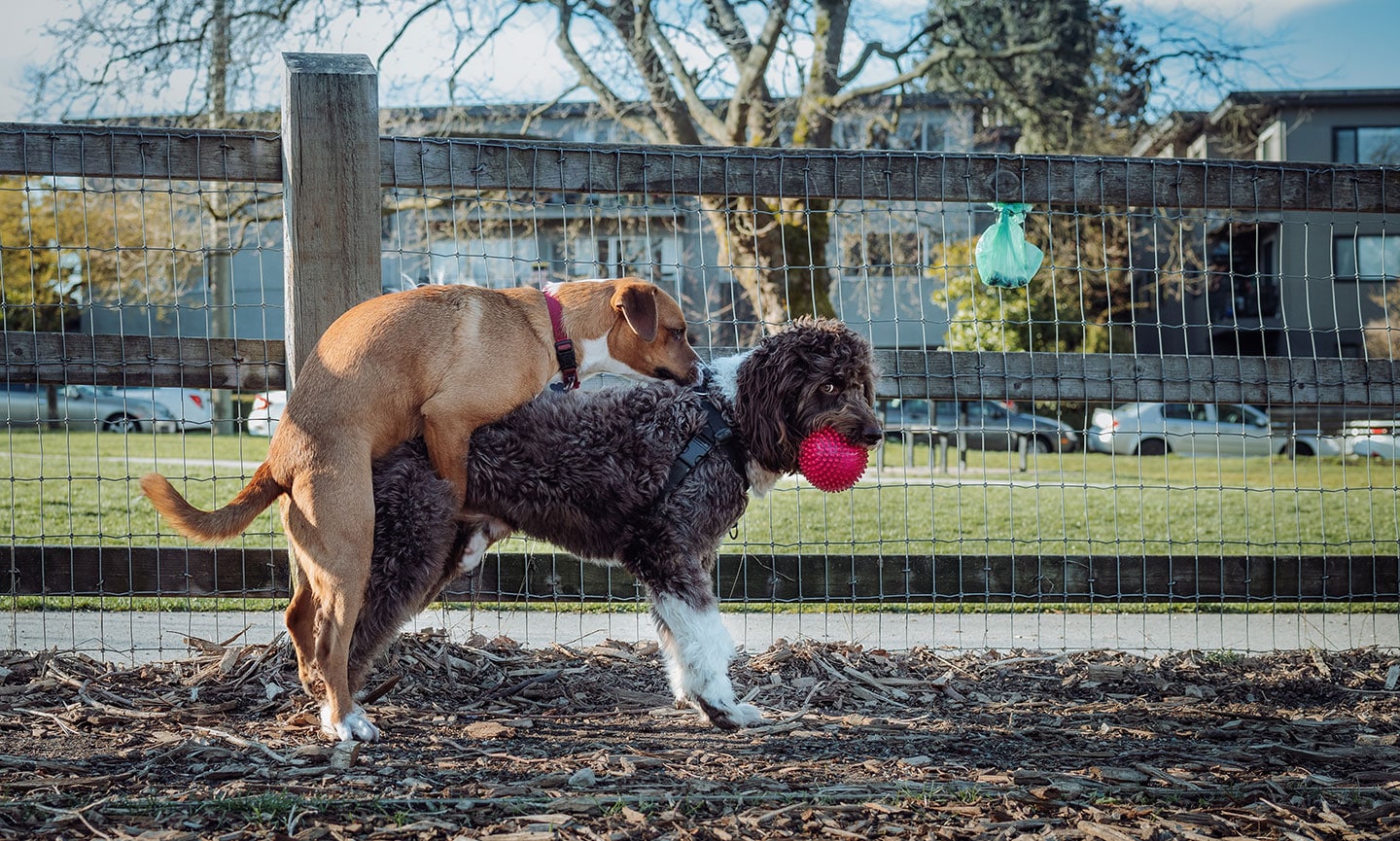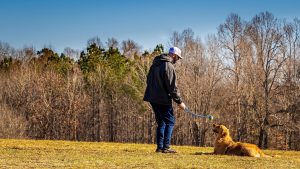I stopped taking Milo to dog parks several years ago. My eight-year-old Jack Russell Terrier used to come home from the park overstimulated, sometimes limping, occasionally with scratches I hadn’t noticed him getting.
Most dog owners assume parks are the gold standard for socialization. You show up, unleash your dog, and let them figure it out with twenty other animals they’ve never met. The logic seems sound until you watch your terrier get body-slammed by a poorly supervised German Shepherd or see him learn that other dogs are unpredictable threats rather than potential friends.
I started organizing playdates with specific dogs and owners instead. Milo now has three regular playmates, all vetted, all matched to his size and energy. He plays harder, recovers faster, and actually looks forward to seeing his friends. The difference showed up in weeks.
Today, I want to talk more about why controlled dog playdates work better than random park encounters, how to find compatible dogs for your pet, and what makes these smaller gatherings more effective for building real social skills.
Why dog parks aren’t always ideal
Dog parks operate on chaos. You walk through the gate with no idea which dogs will be there, how they’ve been trained, or whether their owners will intervene when play gets rough. Milo weighs fifteen pounds. A Labrador weighs sixty-five. The park treats them as if size and temperament don’t matter.
The first problem is unpredictability. Dogs cycle in and out throughout your visit. The calm golden retriever Milo was playing with leaves, and suddenly a reactive Chihuahua arrives with an owner glued to their phone. You have no control over who enters or how their presence changes the group dynamic. Milo learned to stay tense at parks because the environment shifted every ten minutes.
Overwhelming stimulation compounds the issue. Twenty dogs running in different directions, barking, wrestling, and competing for the same toys creates sensory overload. Jack Russell Terriers already run hot. Add that much chaos, and Milo would return home wired for hours, pacing and unable to settle. He wasn’t getting good exercise. He was getting stressed.
Other owners vary wildly in their supervision standards. Some hover and intervene at the first sign of tension. Others sit on benches scrolling through phones while their dogs bully smaller breeds. I watched a man laugh while his husky mounted Milo repeatedly, dismissing my concern with “they’re just playing.” They weren’t playing. Milo was pinned and trying to escape.

Negative experiences at parks can undo months of training. Imagine you have been training your dog for months, or even years, and then an unfamiliar dog knocks him during your park visit. The other dog might mean no harm, but your pet might start associating unfamiliar dogs with getting hurt. And that will lead to leash reactivity, barking and lunging at dogs he doesn’t know. Your dog is not reactive per se, he is just anticipating that they would crash into him the way park dogs had. One visit to the park might result in months with a trainer trying to fix that bad encounter.
Size and temperament mismatches happen constantly. Parks often separate small and large dogs, but “small dog” sections still include forty-pound bulldogs alongside ten-pound terriers. Milo plays well with dogs his size who match his energy. Pair him with a laid-back Shih Tzu, and he overwhelms them. Pair him with a hyperactive Cattle Dog three times his weight, and he gets hurt. Parks don’t account for these nuances.
Jack Russell Terriers are selective about playmates. Milo likes dogs who wrestle and chase. He doesn’t like dogs who play by mouthing or pinning. Dog parks gave him no choice in who approached him or how they initiated play. He learned to be defensive rather than social.
What makes playdates different
Playdates flip the script by introducing control. I know which dogs Milo will see before we arrive. I know their names, their owners, their play styles, and their training histories. If a dog has shown aggression or poor recall, they don’t get invited. That level of vetting doesn’t exist at public parks.
The environment stays predictable. I set up play dates with only one other dog. I know Milo doesn’t do well even in a small group, so why put him at risk or other dogs at risk? This way, he can relax into play instead of constantly scanning for new threats. His body language shifted within the first few playdates. His tail stayed up, his movements loosened, and he stopped checking in with me every thirty seconds to make sure I was watching.
Compatible energy levels matter more than I realized. Milo is now eight years old, going for Year 9. He doesn’t like puppies who are hyperactive. Yes, he was as active once, but he is now in his adulthood years. I organize meetings with dogs that like to run, wrestle for a few minutes, rest, and repeat. They tire at the same rate. No one gets overwhelmed or bored. At dog parks, Milo either exhausted himself trying to keep up with younger dogs or got frustrated with older dogs who didn’t want to play.
The owners at playdates share my training values. We all use positive reinforcement. We all intervene when play gets too rough. We all bring water and watch for signs of fatigue. These aren’t assumptions. We discussed them before the first playdate. That alignment creates a safer space than hoping random park visitors will supervise their dogs responsibly.
Milo has built actual friendships instead of tolerating random dogs. He adjusts his play style accordingly. These relationships developed over repeated positive interactions, not one-off encounters with fifty different dogs.
The real benefits I’ve seen with Milo
Better quality socialization became obvious within a month. At dog parks, Milo spent most of his time avoiding conflict and managing stress. At playdates, he spends his time playing, exploring, and practicing social skills with dogs he trusts. He’s learned to communicate more clearly. When he’s tired, he lies down near me instead of snapping at dogs who approach him. When he wants to play, he play-bows and waits for a response instead of jumping on other dogs.
His behavior improved across the board. Leash reactivity decreased because he stopped assuming every dog would hurt him. Resource guarding faded because playdates taught him that other dogs near his toys don’t automatically steal them. You have to work on it with the other owner, rewarding both dogs for calm behavior around high-value items.
Mental stimulation goes beyond physical exercise. Playdates include activities dog parks don’t offer. We hide treats around the yard and let the dogs sniff them out together. We practice basic commands in a group setting. We rotate through different locations so the dogs experience new environments without the chaos of a public park. Milo comes home tired in a satisfied way, not a frazzled way.
Milo’s friendships have given him confidence. He used to bark at unfamiliar dogs out of fear. Now he observes them calmly because he’s learned that not all dogs are threats. His playdate friends taught him what positive dog relationships look like. That lesson generalized to how he approaches new dogs in controlled settings like training classes.
The consistency matters. We set up dog playdates once per week, or twice per week. That repetition built trust you can’t replicate with random park visits. He knows what to expect, and that predictability reduced his anxiety.
How to find the right playdate partners
Finding compatible dogs takes effort but pays off. One place you can start is a group obedience class. Training classes are ideal for meeting owners who care about behavior and socialization. You can observe how they handle their dogs before committing to a playdate.
Neighborhood walks also work. I’ve approached owners whose dogs seemed calm and friendly during leash encounters. If Milo and the other dog sniff each other without tension, I’ll suggest a short meetup at a neutral location. Most owners appreciate the offer, especially those who also avoid dog parks.
Social media groups for specific breeds or local areas can connect you with potential playdate partners. I joined a Jack Russell Terrier group where owners post about their dogs’ energy levels and play preferences.
Look for dogs with similar size and energy levels first. Milo does best with dogs between ten and twenty-five pounds who like physical play. A Great Dane might be friendly, but the size difference creates risk. A low-energy senior dog might be sweet, but Milo would frustrate them with his intensity.
Ask specific questions before the first playdate. I ask about play style (does your dog wrestle, chase, or prefer fetch?), reactivity triggers (does your dog guard toys or food?), recall reliability (will your dog come when called?), and vaccination status (is your dog current on shots and parasite prevention?). These aren’t invasive questions. They’re practical information that protects both dogs.
Start with short supervised meetings in neutral territory. A quiet park or empty tennis court works better than someone’s backyard for first introductions. Keep both dogs on leash initially. Let them sniff and observe each other’s body language. If they seem relaxed and curious, let them interact off-leash for three to five minutes. If either dog shows stress signals like excessive yawning, lip licking, or tucked tails, end the session and try again another day.
Trust your instincts. If an owner seems dismissive of boundaries or makes excuses for their dog’s bad behavior, skip the playdate. Your dog’s safety matters more than being polite. I’ve turned down playdates with owners who couldn’t answer basic questions about their dog’s behavior or seemed annoyed by my caution.
Setting up successful playdates
Location affects how dogs interact. Neutral territory works best for early playdates. You can try a fenced tennis court at a local school or a quiet corner of a park. Neither dog feels territorial, and they can focus on each other instead of defending their space. After several successful neutral meetups, you can try it in the backyard.
Duration matters more than you’d think. Find your dog’s sweet spot. Some dogs are good for five minutes, others can go for an hour. End playdates before anyone reaches that point. It’s better to leave dogs wanting more than to push until someone gets cranky.
I bring water, a bowl, and a few high-value treats to every playdate. Dehydration happens fast during active play, especially in warm weather. The treats let me practice recall and reward calm behavior when dogs start getting too wound up. I also bring a spare leash in case we need to separate dogs quickly.
Reading body language keeps playdates safe. Play bows, relaxed open mouths, and bouncy movements mean dogs are having fun. Stiff bodies, pinned ears, whale eyes (showing the whites), and tucked tails signal stress. If Milo freezes or stops engaging, I call a break. If the other dog starts mouthing too hard, his owner redirects him. We don’t wait for fights to break out before stepping in.
Knowing when to intervene versus when to let dogs work it out requires judgment. Minor disagreements like a quick growl over a toy don’t need human involvement if the dogs resolve it in seconds. Sustained tension, one dog repeatedly pestering another who’s trying to disengage, or escalating vocalizations require immediate intervention. I’d rather interrupt play unnecessarily than let a bad interaction damage the friendship.
Why You Should Schedule a Doggy Playdate Now!
Milo’s quality of life improved when I stopped dragging him to dog parks and started organizing playdates. He’s calmer, more confident, and actually enjoys socializing instead of enduring it. The shift required more effort upfront to find compatible dogs and coordinate schedules, but watching him play with friends who make him happy was worth the work.
Dog parks serve a purpose for dogs who thrive in chaotic environments with strong off-leash skills and bombproof temperaments. Milo isn’t that dog. Most dogs aren’t. Playdates gave him what parks couldn’t: safety, predictability, and genuine friendships.
Start small. Find one dog who matches your pet’s energy and size. Set up a short meetup in a neutral space. If it goes well, make it regular. Milo went from anxious and reactive to relaxed and social because three owners committed to giving our dogs better socialization than random park visits could provide.
Your dog doesn’t need to play with every dog they meet. They need positive experiences with dogs they trust. Playdates deliver that.










